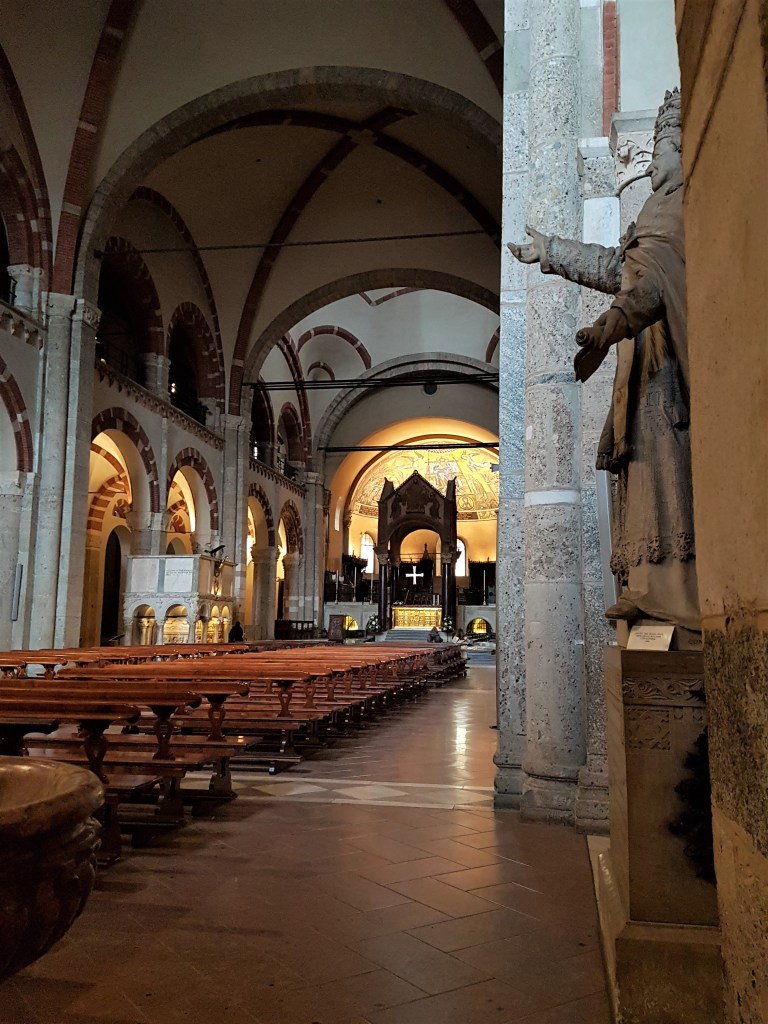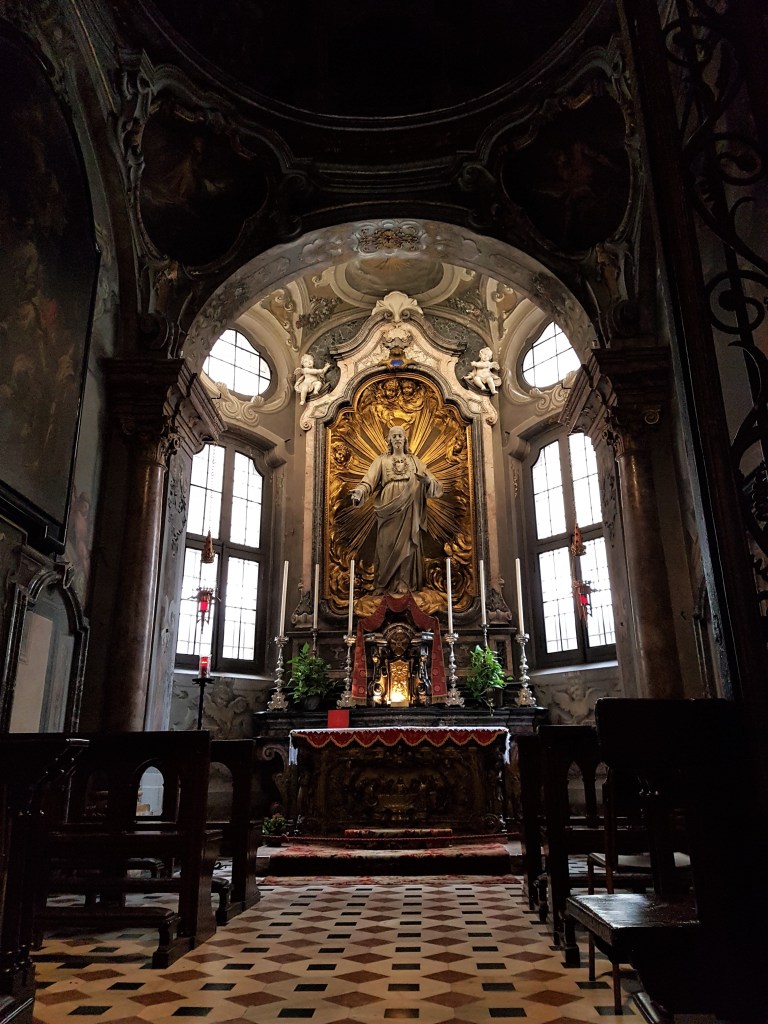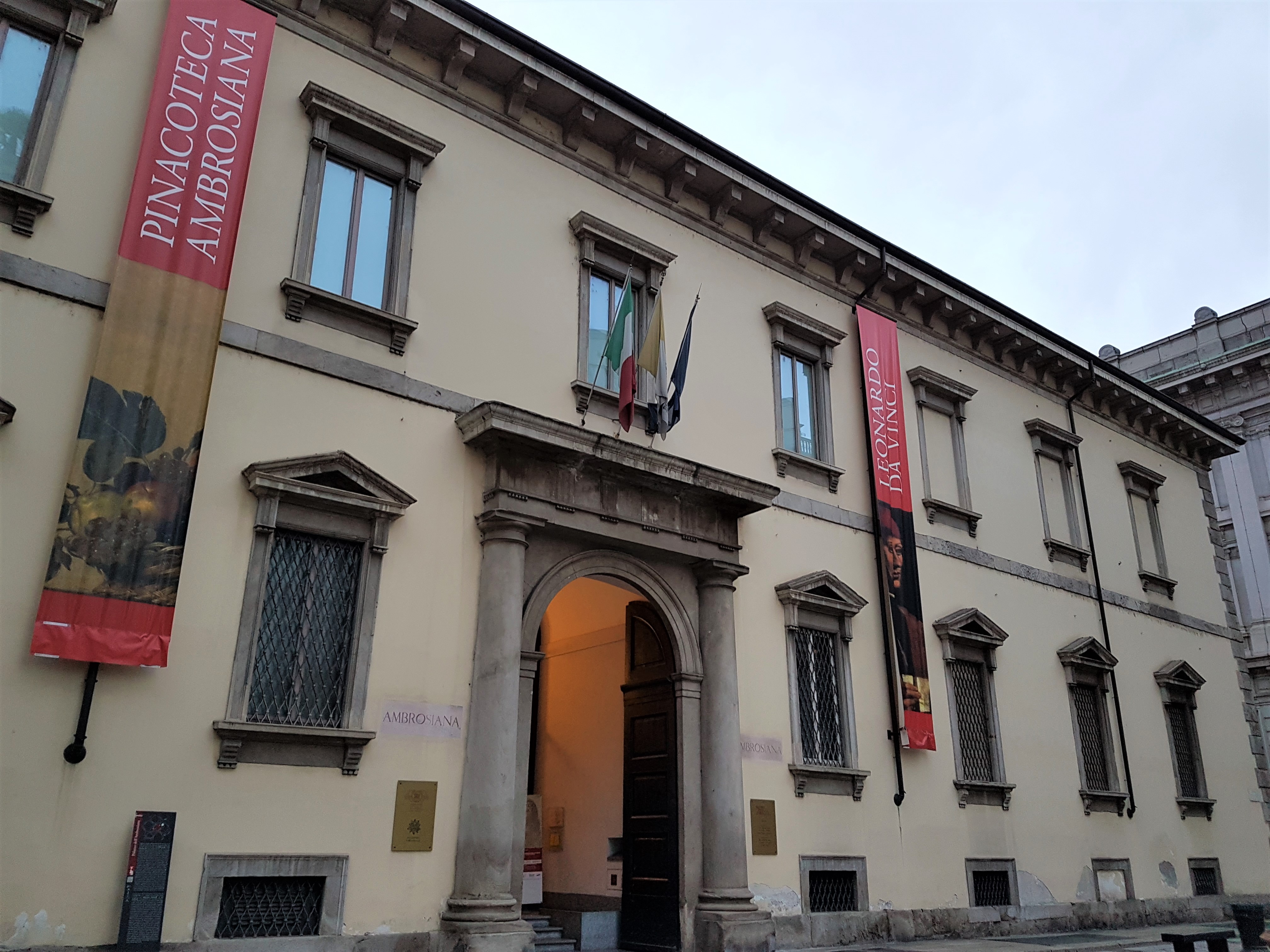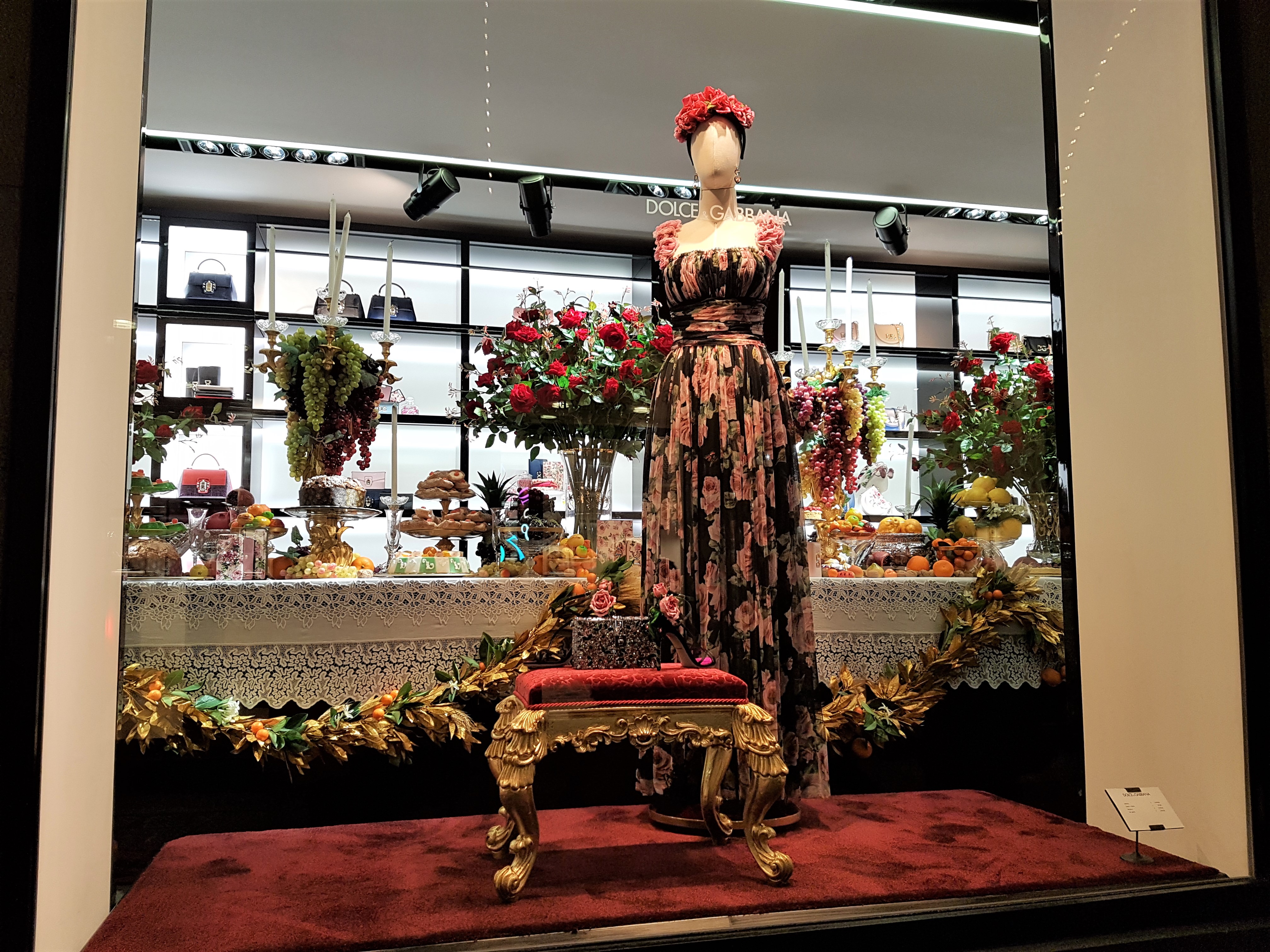As regular readers to my blog may have guessed, I’m a sucker for a castle and when I found out Milan has its very own castle, it ended up somewhere near the top of my must-visit list.
Having spent the morning exploring every last inch of the city’s Duomo, I made my way to the castle.
The Sforza Castle, or Castello Sforzesco to give it it’s Italian name, was built between 1360 and 1370 on behalf of Galeazzo II Visconti, the then-ruler of Milan.
It then passed into the hands of the famed Sforza dynasty, after whom the castle is named, who turned it into a great ducal residence.
Over the centuries, the castle changed hands multiple times between Milan’s ruling powers and fell into decline, until it was rescued and restored by the architect Luca Beltrami in the late 19th century.

When I arrived at the castle, I walked through the massive gates into a huge courtyard, and it was then that I realised that the Sforza Castle isn’t a castle in a traditional sense with lots of rooms, and nooks and crannies, to explore.
Instead various parts of the castle have been turned into museums – there’s an Egyptian museum, an art gallery, a museum of ancient art, as well as a museum dedicated to Michelangelo’s masterpiece Rondanini Pietà.

Rather than explore the castle’s many museums, I spent time looking around the castle’s courtyards, taking photos of the different facets of this impressive building.
It’s an imposing sight and must have been quite something during its heyday when the Sforza family held court.

Behind the castle, sits Milan’s Parco Sempione, and having seen all there was to see in the castle’s courtyards, I headed to the park through an exit at the rear of the castle.
The 116-acre park used to be a hunting ground for the Sforza family but in the late 19th century it was turned into a landscaped park.
At the far end of the park is a huge triumphal arch, commissioned by Napoleon, that was remodelled as an Arch of Peace by the Austro-Hungarian emperor Francis I in commemoration of the 1815 Congress of Vienna.
After making a quick detour to a nearby gelateria for some gelato, I headed back to the park where I took my time walking around it.
The park is a large, attractive space, and although there isn’t anything particularly special or distinctive about it, it was nice to spend some quiet time away from the busy streets, ambling around the park’s pretty trees and lakes.

After a pleasant stroll, I headed off on foot to the Basilica di Sant’Ambrogio (above), which I’d read was one of Milan’s most impressive churches.
When I arrived, the church was closed for lunch so I hung around for 10 minutes or so until it opened, then headed inside.
The basilica was founded by the city’s patron saint, St Ambrose, in the 4th century and is notable for the two campaniles that stand either side of the church.
Inside, the basilica is a fairly standard Milanese affair with a pretty patterned roof and lots of priceless-looking paintings hanging above the many altars that line the church’s sides.
There’s also a striking marble pulpit decorated with delicate, intricate carvings.



The church’s crypt is the resting place of St Ambrose, along with two martyrs, the Roman soldiers Gervasius and Protasius.
And I was somewhat taken aback to find their three skeletal corpses on display in a see-through casket, their bones clothed as though they were still alive.
It was such an unexpected and unusual sight that I had to take a second glance to make sure I hadn’t imagined it.

From the basilica, I made my way through the back streets of Milan to the Pinacoteca and Biblioteca Ambrosiana.
The art gallery and library is home to paintings, sculptures and artefacts from the 16th to the 19th centuries, and features artworks by the likes of Jan Brueghl, Paul Brill, Sandro Botticelli and Titian, as well as a number of Lombard artists.
But the gallery’s pièce de résistance is Leonardo da Vinci’s Portrait of a Musician, as well as pages from a folio featuring sketches and notes by the great master.


The Pinacoteca and Biblioteca Ambrosiana has some 22 galleries to explore and is situated in a magnificent late 16th century building.
I followed the suggested visitor route around the gallery, which at times took me outside to a balcony lined with statues, overlooking a spectacular courtyard (above).
The building itself is as much a work of art as the priceless pieces within and many of the rooms are spectacular.
Room 12, for example, features a stunning marble staircase and mosaic, with a series of marble statues above it. While rooms 10 and 11 feature a fake wooden library above the artworks.
The lighting throughout is superb, too, and is possibly the best lighting I’ve come across in a museum or gallery.
The artworks are showcased in dimly lit rooms with spotlights shining on them, which makes them pop and shows them at their best.
The Pinacoteca Ambrosiana is best known for its da Vincis but as I walked around I had yet to see them and was worried I’d missed them.
But as I was leaving the gallery, I stepped into a room and there, taking pride of place, was da Vinci’s Portrait of a Musician.
It’s a striking painting and dominates the room, and I spent quite a bit of time admiring it, as well as the other painting in the room, before moving into the library.


The library (above), which was commissioned by Cardinal Federico Borromeo in the early 17th century, is supposedly Italy’s first public library and is stacked high with thousands of books, but its main attraction is the Codex Atlanticus.
The Codex is a collection of sketches and notes by da Vinci, and pages from the Codex are on display in clear panels in the centre of the room.
I took my time looking at all the pages, some of which are really impressive, others less impressive scraps and doodles, and I came away with the impression that da Vinci must have been a prolific doodler.
There’s one last masterpiece within the gallery, tucked away at the far end of the room, just before the exit – Caravaggio’s Basket of Fruit.
It’s a magnificent painting, and with this and the da Vincis, the gallery saved the best for last.
I’m always amazed by how true to life so many still-life paintings are and Basket of Fruit is no exception.
I have no idea how Caravaggio managed to paint such realistic looking grapes, apples and figs, it’s really clever and I was a little dumb stuck by how good it was.
It’s a fabulous painting and a brilliant way to end a superb museum.
By now it was early evening, so I stopped off for a cup of tea in one of Milan’s many swanky cafés (bog standard Starbucks-type establishments seemed to be few and far between in Milan), then spent the rest of the evening wandering around the shops.
I had another look around La Rinascente department store, then ambled up the Corso Vittorio Emanuele II, a large shopping street, until I reached the fashion quarter.

There, I turned down the swanky Via della Spiga, aka Milan’s Bond Street, where I marvelled at the incredible window displays in the designer stores.
Being a pauper, I avoided going inside any of the shops as I wasn’t too keen on having a Pretty Woman moment, but the window displays were so spectacular I was happy just gawking at them and the overpriced goods within.

Milan is very much a walking city and I enjoyed my day ambling around the city, mooching from one attraction to the other.
From churches to priceless works of art, castles to parks, I visited so many varied places it made for a fun and eventful day. I was also glad I found time to fit in a spot of window shopping.
I wasn’t sure I’d have time to fit in any shopping as I’d planned such an action-packed day, but I’m pleased I did as I couldn’t go to one of the world’s greatest fashion capitals without seeing a few sartorial masterpieces.

Such beautiful architecture!
LikeLiked by 1 person
It is, the buildings in Milan were incredible.
LikeLiked by 1 person